According to the Bureau of Statistics 2021 Census data,at one stage of the pandemic,41 per cent of workers in Brisbane’s CBD were working from home,including those in roles previously considered untenable from anywhere but the office.
A Transport Opinion Survey conducted by the University of Sydney’s Institute of Transport and Logistics Studies published in March 2023 found Brisbane workers spent 33 per cent of their work week at home.
And while there’s been much said about the long-term impact of working from home and hybrid working arrangements on urban centres,statistics,especially those from the 2021 Census,expose the pitfall of speculating too soon.
Like many global cities,Brisbane is still emerging from the pandemic years and figuring out what is the new normal,and what might be swallowed by the state of flux.
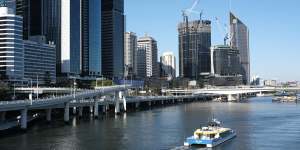
Working from home could impact the CBD in the future.Matt Dennien
Urban geographer at the University of Queensland Dr Thomas Sigler doesn’t believe work from home culture is shifting anytime soon.
“If you look at Millennials and younger generations,they are increasingly looking for flexibility rather than money,” he says.
“For them,working from home full time or any time they want is way more important than a $10k raise.”
Elsewhere,hybrid arrangements have allowed people to reconsider their lifestyles and broaden the scope of where they live.
“The trade-offs for families have changed since COVID. Where they once might’ve sacrificed space to avoid long commutes,the opposite may now be true,” Sigler says.
For Brisbane residents,that might look like moving further out into the suburbs,which inevitably creates more urban sprawl,or a lifestyle change to the Gold Coast or Sunshine Coast.
“Knowing that you can organise your schedule in a way that only requires you to come to Brisbane two to three times a week is palatable,” he says.
Fewer workers and residents evidently affects the businesses – cafes,bars,restaurants and retailers – that rely on heavy foot traffic and after-work trade for their bread and butter.
But unlike Melbourne and Sydney,both of which were heavily affected by the pandemic,there are signs that Brisbane’s CBD is faring surprisingly well.
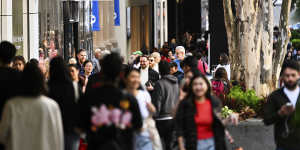
Foot traffic is the bread and butter for many inner-city businesses.Dan Peled
Data released by the showed that in the six months to July 2023,Brisbane’s CBD office vacancy rate fell from 12.9 per cent to 11.6 per cent due to continual strong demand from businesses looking to invest in Brisbane.
That’s reinforced by a string of new proposals:a 26-storey office tower is planned as part of the $2.5 billion revamp of Eagle Street pier ();a 42-storey tower on the site of the old Regent’s Theatre;and top-tier professional companies are once-more.
shows improved office attendance across the country,with the national average CBD visitation in Q3 2023 reaching 71 per cent of pre-COVID levels.
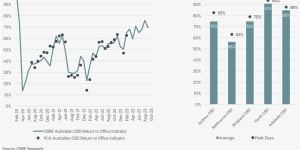
Data from CBRE’s 2024 Pacific Market Outlook shows Brisbane’s peak day office visitation is 75 and 79 per cent.CBRE
And despite CBRE research published last year which showed a,there is clear continued investment in Brisbane’s retail economy,from the upcoming shopping emporium in Queen’s Wharf to luxury shopping precincts in QueensPlaza and Edward Street.
That’s not to say Brisbane isn’t preparing for the possibility that hybrid work will alter the function of its CBD in the decade to come.
Brisbane City Council’s outlines steps to revitalise the local economy and increase the appeal of the city centre post-pandemic and pre-2032 Olympic and Paralympic Games.
It acknowledges the need to diversify and follow the lead of other urban centres that are reinventing themselves,shifting from commercially focused precincts to more human-centred places to remain relevant.
“Forty per cent of our business comes out of the CBD,but it’s also becoming much more of a place where people are living,” deputy mayor Krista Adams says.
Infrastructure investments like,the and,and the future pedestrianisation of streets in the CBD,are just some of the measures being taken to improve the city’s liveability and connectivity.
“There’ll be sections where traffic won’t go any more…there’ll be more trees,more seating,more open footpath dining.
“I don’t want to compare ourselves to other cities,but a bit of that Barcelona,Las Ramblas feeling,” Adams says.
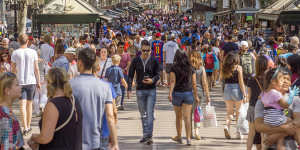
As more Brisbane CBD streets become pedestrianised,could sections of the city resemble people-focused hubs like Barcelona’s Las Ramblas in the future?Shutterstock
Sigler agrees that while some demographics might be inclined to move further from the CBD due to flexible working arrangements,others will be enticed to move further in.
“There’s a certain cohort that are actually quite in favour of[inner-city living],” he says.
“Mainly international students,but also SINKs (single income,no kids). The two demographics that tend to avoid the CBD are families with children and families with dogs.”
With amenities at your fingertips,access to public transport,fast connections to work and university,and a burgeoning bar and restaurant scene,it’s easy to see the appeal.
“We need to reimagine and reconfigure the CBD,maybe not immediately but gradually and make it much more livable,” Sigler says.
“In the future,it’s going to be much more of a consumer economy than a producer economy. In other words,the services that serve people will arguably become more important than the services that serve firms.”
Suburban Futures director and chairman of the Lord Mayor’s Better Suburbs Initiative Ross Elliott might argue that the capital B of the city’s CBD has been on a road to redundancy for some time.
“The jobs that are in the CBD,even if you include the inner-city suburbs,are only 13.8 per cent of all jobs in south-east Queensland,” he says.
“The fastest growing jobs are not the CBD and inner-city jobs,they’re jobs across the metropolitan region[in] industries like health care,social assistance,education and training.”
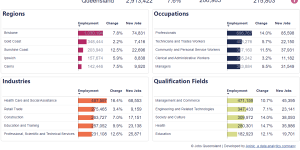
Jobs Queensland Anticipating Future Skills Report shows the regions,skills and industries expected to grow between 2025 and 2026.Jobs Queensland
It’s why he champions greater investment and development in the suburbs. “If we keep spending money on inner urban renewal,[it just keeps] rewarding rich people.
“What we ought to be doing is looking at suburban business districts,which could be housing more employment. By doing so,we create a lot more opportunities for people to work close to home and generate shorter commutes.”
Places like Springfield,Chermside,Maroochydore and Ipswich could become crucial suburban hubs that help see a polycentric,rather than centralised,strategy implemented across south-east Queensland.
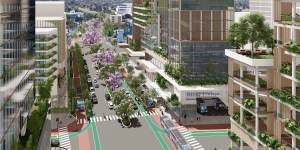
Ross Elliott envisages a more connected,pedestrian-friendly Chermside.MODE Design
It could deliver a multitude of benefits,including helping more people enter the housing market,without the pressure of CBD proximity.
“If the majority of jobs are already in the suburbs and that’s where the majority of future jobs are going to be,we need a plan to deal with living and working in our suburbs and making them better suited to the future,” Elliott says.
“That’s why we say better suburbs equals better cities because you cannot have a better Brisbane if the quality of life is confined to a few highly privileged,very wealthy inner-city inhabitants who work within a couple of kilometres of the city.”
With the Olympics coming up,there’s reason to believe the inner-city will take precedence over suburban renewal in coming years,regardless of employment projections.
And while remote work might be here to stay,as a study into hybrid work’s effect on the Australian CBD states,“the power of urbanism symbolised by the ways in which people and businesses cluster together,drawing strength from their proximity to each other,survived the world’s last pandemic.
“If we consider the past,the negative rhetoric around the death of cities is largely unjustified.”
This article was produced in collaboration with the Australian Science Media Centre,with support from the Walkley Foundation-administered Meta Public Interest Journalism Fund.
Get the inside word on the news,sport,food,people and places Brisbane is talking about..